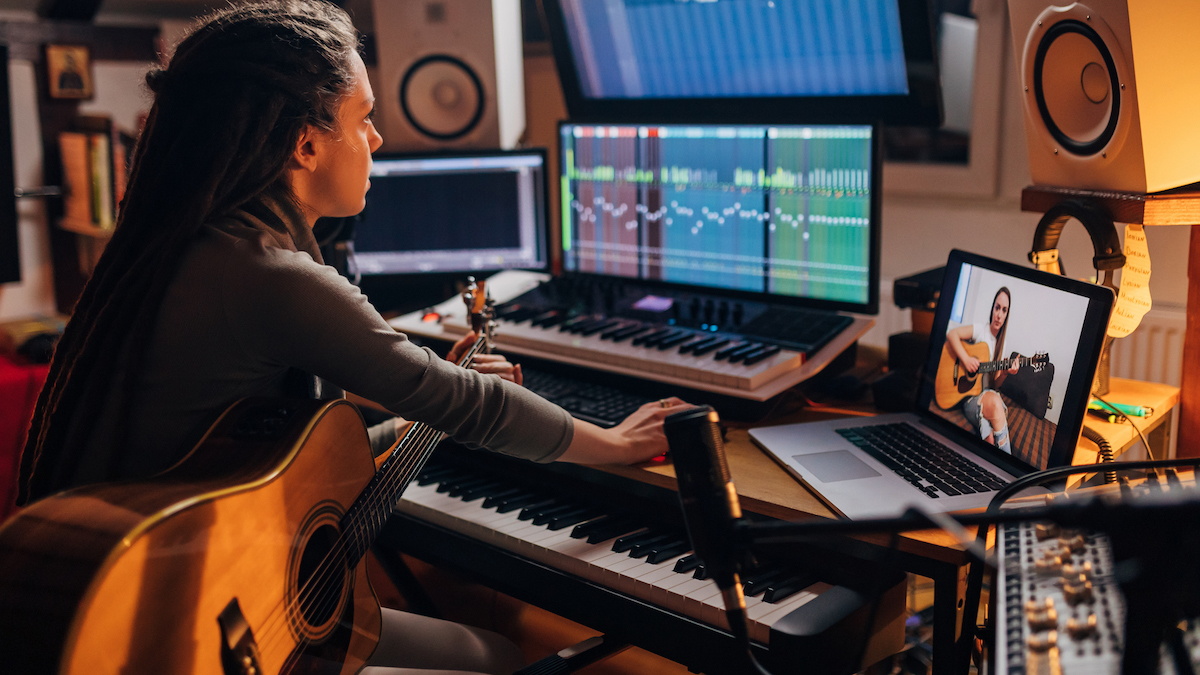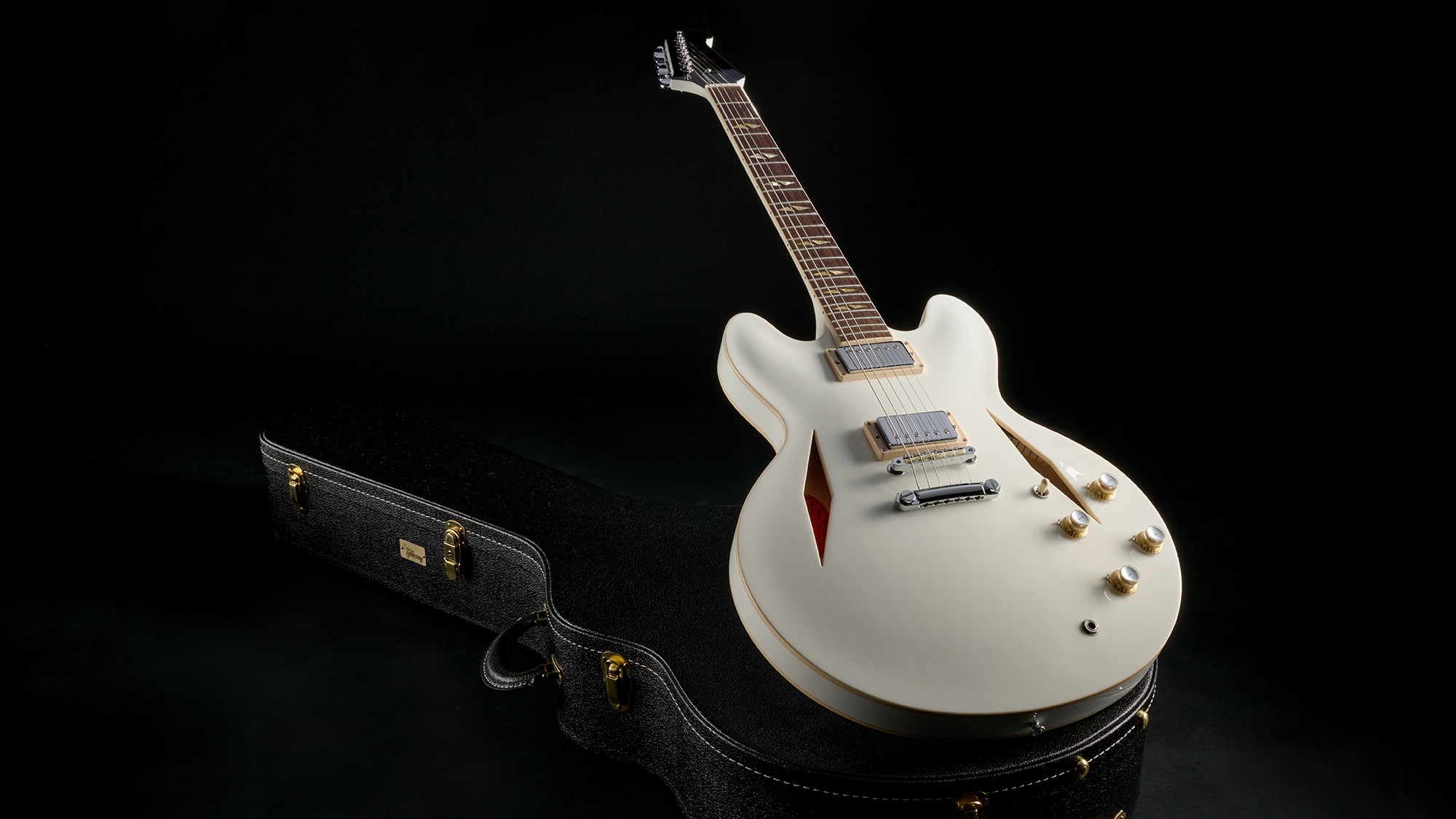“It’s like playing a concert for millions of people all at once, without ever stepping on stage”: A guitarist’s guide to sync licensing
Your guitar belongs on TV, and the way into one of the fastest-growing sectors of the music business may already be in your sights. Emmy-winning composer Mike Meiers breaks it down.

For guitarists navigating today’s challenging music landscape, it’s easy to focus on what’s not working. But there’s a lane that’s not just working, it’s thriving: sync licensing.
Music licensing for TV, film, ads and trailers is one of the fastest-growing areas of the industry, and guitarists have a major advantage – if they know how to use it. The ability to craft evocative textures, rhythms and motifs (aka melodic hooks) is a marketable skill.
When you start to understand how guitar translates across different genres and moods, you open doors to collaboration, opportunity and income. You don’t have to consider yourself a songwriter – if you have strong guitar chops you already hold one of the most in-demand tools in the licensing world.
It’s easy to think sync is only for producers and singer-songwriters. But some of the most-placed tracks in TV and film were built around a killer riff, a driving rhythm or a simple, unforgettable motif. Whether you’re creating full tracks or collaborating with others, your guitar can be the engine that drives a sync-ready song.
How to start writing music for sync
But before you start writing and sending music, let’s think a little. What makes sync different from traditional songwriting is intent. When artists write for themselves they get personal and specific, but when writing for sync, the goal isn’t to describe a scene, it’s to elevate it emotionally. That shift in mindset is essential.
Three core elements consistently make a song work for sync: universal themes, dynamic builds and emotional impact.
Universal themes are what connect us all – loss, perseverance, love, hope. These themes transcend genres, and when paired with lyrics that leave room for interpretation, they become the foundation of a syncable track.
All the latest guitar news, interviews, lessons, reviews, deals and more, direct to your inbox!
One of the biggest mistakes I see songwriters make is assuming that more detail equals more impact. But in sync, less is often more. The visual is already showing the specifics. Your job is to heighten the viewer’s experience.
That’s where dynamics come in. Can you make a verse whisper and a chorus roar using just four chords? Can you strum in a way that builds tension, then releases it like a wave? It’s not about complexity, it’s about movement.
When your playing lines up with the emotional arc of the scene, something clicks. You create that moment where a viewer pauses, thinks “What’s that song?” and Shazams it. It’s like playing a concert for millions of people all at once – without ever stepping on stage.
Focus on the emotion, not the technique
I love a solo as much as the next guitarist – but don’t underestimate the power of a simple lead motif
Simplicity is the secret weapon. I’ve seen beautifully-crafted songs get passed over because the mix was cluttered, or the chords didn’t gave the vocal space to breathe. The best sync tracks often sound effortless. Think of The Black Keys, Zayde Wolf or Sam Tinnesz; their guitar parts are gritty, memorable and dead-on for the mood.
If you want your guitar to work in sync, think beyond open chords and start asking: “What emotion am I trying to create?”

Voicing is where it starts. Sure, you can play G–Em–C–D all day, but what happens when you capo the seventh fret and play a C–F–Am–G shape instead? Same key, but now it’s fragile, intimate – perfect for a reflective montage or a quiet confessional scene. These kinds of voicing shifts make all the difference when you're writing for visual media.
Strumming is your next tool. Every rhythm creates a vibe, and sometimes that vibe is stuck in the era we grew up in. I once had a client whose strumming patterns screamed Goo Goo Dolls, which wasn’t a bad thing, but it wasn’t intentional.
When we become aware of our default patterns, we can break them and start creating grooves that actually serve the scene. Because a Goo Goo Dolls vibe does not serve every scene.
I love a solo as much as the next guitarist – but don’t underestimate the power of a simple lead motif. You don’t need a solo to make something memorable. One of my tracks placed on Shameless used nothing more than a simple minor pentatonic riff repeated for nearly two minutes. No flash, just feel.
What tones work best for sync music?
Layering is where the studio becomes your playground. A basic acoustic progression becomes cinematic when you double it with an electric part using a different voicing. Add subtle reverb, a touch of delay, maybe a clean lead line that hints at a melody, but never distracts from it. These little decisions create a full sound without ever stepping on the vocal or the dialogue in a scene.
Tone matters. If I want grit, I might reach for a 339 and a fuzz pedal. If I want sparkle, a Telecaster with a clean boost will do the trick. And lately, I’ve been loving a Strat through iZotope’s For the Chorus effect in VocalSynth, yes, VocalSynth. It’s unexpected, it’s out of the box, and it makes the part feel unique. The right tone helps your guitar cut through a mix in a way that doesn’t overpower, it enhances.
Don’t be afraid to track parts you’d never play live. In the studio, it’s not about showing off. It’s about layering with purpose, shaping emotion, and building a moment that feels so good, it barely needs words.
Explore alternate voicings, break down melodies, start treating guitar parts like vocal hooks
Keeping your mixes clean is also crucial. I always deliver multiple versions, one with all the bells and whistles, and another stripped back to just vocals and guitar. The more options you give a music supervisor, the more likely your track will fit a scene, and get used.
See what’s selling
One of my favorite placements was a track called Hold On, co-written with Josh Doyle and Madeline Finn. It’s a delicate, acoustic-driven song built around fingerpicking. I tracked two acoustics, one in standard tuning and another capo’d higher up for contrast, plus an electric playing single note accents.
The song lyrics don’t overpromise. It doesn’t say: “Everything’s going to be fine.” It just says: I’m here. I’m holding on. That’s the emotion we aimed for, and it worked. That track’s been placed multiple times; every time it lands, I’m reminded it wasn’t about the technicality, it was about the truth in the feel.
And because that emotion is universal and relatable, the song has worked across multiple scenes and scenarios. That’s what sync success often looks like – it’s about creating something honest and emotionally flexible enough to support a range of stories.
If you’re looking to tap into sync, return to your basics, but look at them through the sync lens. Explore alternate voicings, break down melodies, start treating guitar parts like vocal hooks. If you’re not interested in being a songwriter, combine your skills and knowledge with someone who is, and you’ll be unstoppable.
Use sites like TuneFind to discover what’s selling. Study the music in shows you love. Pay attention to how guitars are used and why they work in specific moments.
Most importantly, don’t overcomplicate. Serve the emotion. Be the support, not the spotlight. And when you get it right, you won’t just hear your guitar on screen – you’ll feel it.
Mike Meiers is an Emmy-winning composer, producer, and the founder of Songwriting For Guitar. He’s helped thousands of musicians unlock the power of song with the guitar, teaching them how to move past basic chords and into writing music that truly connects. His guitar-driven approach has led to sync placements on Netflix, NBC, Hulu, MTV, and more. Mike is also the author of The Songwriting Guitarist, a practical guide for turning guitar ideas into songs that land. You can download a free copy at songwritingforguitar.com. Whether he’s coaching co-writes, producing for sync, or guiding a packed workshop, Mike’s mission is clear: help songwriters sharpen their skills, break through creative blocks, and write with confidence.
You must confirm your public display name before commenting
Please logout and then login again, you will then be prompted to enter your display name.


